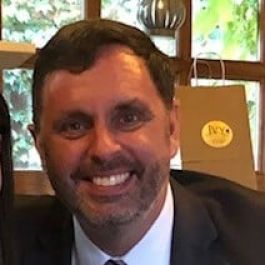Want reps to engage with a sales playbook? Let them help build it.
Creating a sales playbook takes time and effort, but it’s only useful if the sales team sees it as a tool for driving success. If reps see areas for improvement but don’t feel empowered to suggest a change to their organization’s sales process, they might not feel compelled to lean on the playbook at all.
The key to driving engagement, sales leaders from Austin tech said, is employee ownership.
At freight brokerage company Arrive Logistics and database startup MongoDB, sales leaders said playbook development and refinement strategies revolve around feedback from reps at every level of the sales organization, as well as input from clients and cross-departmental stakeholders. Sometimes, they said the ideas of individual salespeople turn into team-wide implementations.
One tip to keep in mind, however, is that the work is never finished.
As sales strategies, products and industries evolve over time, sales teams should receive continuous training on each. Furthermore, any updates made to a sales team’s playbook should be piloted, rolled out and then tested long-term to better evaluate the efficacy of any strategy, sales leaders said. While some change is necessary, constant change becomes messy.

The sales playbook at freight brokerage Arrive Logistics is optimized for reps through continual feedback. Executive VP of Business Development Duke Begy said there are multiple channels for salespeople, stakeholders and customers to voice their concerns and suggestions. Sales leaders then make changes to their team processes based on common threads in feedback.
How do you format and deliver your sales playbook to the team, and why?
Our sales playbook starts with our learning and development program. We share and leverage scripts and slide decks to train our sales force, but we are also focused on mentoring, shadowing and hands-on learning. On their first day, sales reps start real-world training where they learn our industry, competitive advantages, the qualities of a successful sales rep, and most importantly, how to develop long-term internal and external relationships. This training is ongoing. No matter a person’s tenure, our sales department is held accountable to continuously learn.
For our scripts and key messaging, we use typical applications such as Microsoft Word and PowerPoint. But our sales teams live in our proprietary technology platform, Accelerate. This platform houses all the data our sales teams need to make decisions on how to best serve our partners as well as when they need to engage other departments for support.
Some of our best company programs started as an idea that a sales rep piloted.”
What processes do you have for keeping your playbook up to date?
We established various channels of feedback, not only for our sales teams but also for carriers and customers. These feedback channels are crucial for us to understand how we are servicing our partners. But they also ensure sales has the tools and messaging they need to be successful. The sales leadership team looks for trends in this feedback. When we see a pattern — maybe a gap in behavior or an opportunity for improvement — that is when we will make improvements to our learning and development program.
When we make a change, we try to get feedback from sales reps. If we make a change without bringing the team along, they won’t be bought into the process. Also, we know that we shouldn’t make changes all the time. Strategies need time to play out before changing them. So we are thoughtful when we update our sales approach and training, and always start with feedback.
How do you include your salespeople in the process of developing your playbook?
We believe in piloting strategies. Some of our best company programs started as an idea that a sales rep piloted. And we ask for feedback at every level within the company, from the new hire that started two days ago to our founders.
In the last several years, we received feedback from all of our stakeholders on the importance of visibility into the status of loads. Arrive invested heavily in that technology and doing so tied into our sales approach. We evolved our messaging and scripts to over-communicate with customers and lead with our visibility capabilities.

Senior Director of Sales Enablement Doug Williams said anyone can influence the sales playbook at database company MongoDB. Being a new employee or someone outside sales doesn’t prevent an individual from contributing to the sales team’s strategy.
How do you format and deliver your sales playbook to the team, and why?
There is no single playbook in the traditional sense. Instead, we ensure that our sellers are trained via a variety of modalities and with the support of different teams. Within a seller’s first six months, they will have participated in two week-long training events as well as one-on-one training from their direct manager, a solutions architect, the sales enablement team and others. We also bring the process to life through learning and document management, as well as call review technologies.
Continued practice is a key priority. Ensuring our sellers take the time to understand customers’ situations and apply our sales principles enables them to deliver the most value to clients.
Continued practice is a key priority.”
What processes do you have for keeping your playbook up to date?
Stakeholders with suggestions to improve how we sell could come from anywhere in MongoDB. There is no premium put on someone’s title. If there is a good idea that will drive greater efficiency in our process and greater value for our customers, we implement it.
We are constantly adapting to changing market forces, new products, technologies and unforeseen circumstances. Working from home recently has forced us to rethink many processes. More responsibility is now placed on each seller’s shoulder in terms of accountability and daily discipline. And we’ve had to ensure the materials and processes we use to support them are reflective of this new reality.
How do you include your salespeople in the process of developing your playbook?
Many of our most useful sales tools come from sellers’ ideas. For example, we recently created a new discovery tool that offers quick snippets of technologies, their benefits to the customer, the alternative the customer may be using today and how MongoDB would differentiate its offerings. No one asked a seller to build it: the tool’s development was organic. A rep saw a need, figured out a way they could help, built it, asked for feedback, and it was in front of other reps in a week. It represented great initiative on the part of the seller, as well as the collaborative nature of the team itself.









